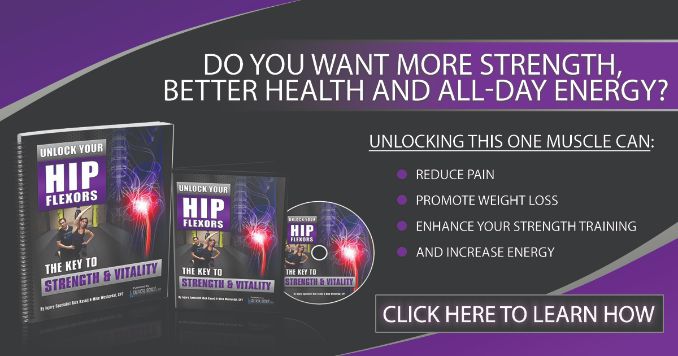When recovering from hip problems, it’s common to face hip imbalances that affect strength, mobility, and alignment. These imbalances may impact not only the hip joint but also the lower back, knees, and posture. Addressing them with the right rehab exercises can reduce pain, improve mobility, and help prevent long-term issues.
Below, you’ll find a practical step-by-step guide to hip imbalances [1] rehab exercises that target the gluteus medius, gluteus maximus, and surrounding hip muscles for better pelvic stability, alignment, and overall movement.
1. Band Side Steps
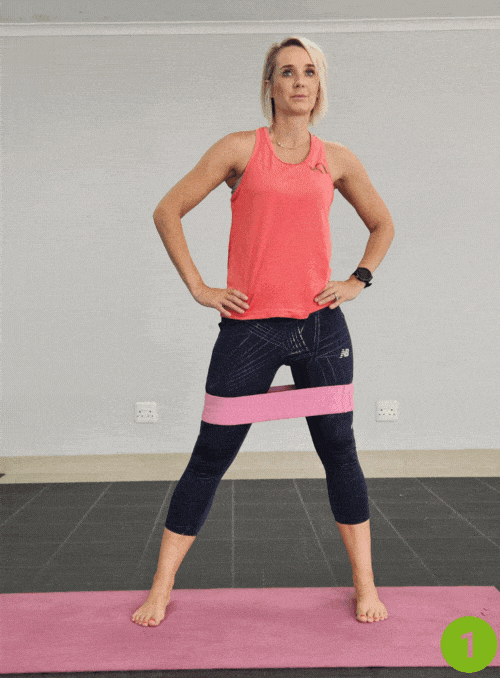
- Place a band around your thighs, just above the knees to start your hip imbalances rehab exercises.
- Stand tall with feet together, knees slightly bent, and core engaged.
- Take a slow step to the side, keeping resistance on the band.
- Repeat 10–12 reps each way for 3 sets.
- Strengthens the gluteus medius and improves hip stability.
2. Single Leg Glute Bridge
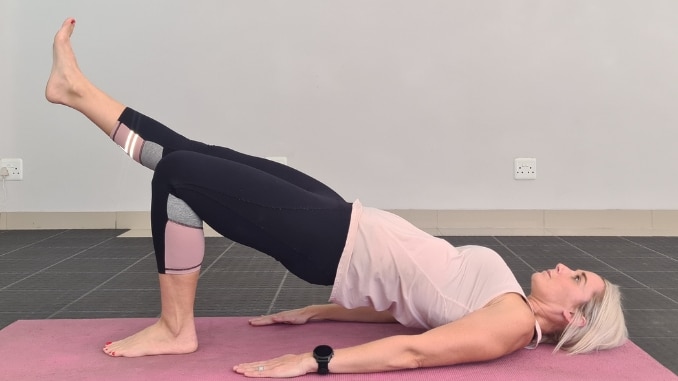
- Lie on your back with knees bent and feet flat on the floor.
- Lift one leg off the ground, keeping the knee bent.
- Push through the grounded foot to lift your hips.
- Perform 8–12 repetitions per side for 2–3 sets
- This improves pelvic alignment, engages the gluteus maximus, and reduces strain on the lower back.
3. Standing Hip External Rotation with Band
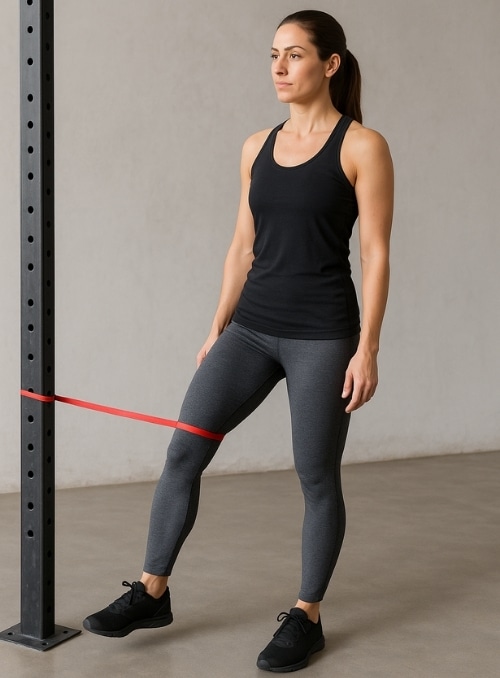
- Anchor a resistance band around a sturdy support at hip height.
- Stand sideways with the band around one leg.
- Slowly rotate your hip outward, keeping your posture upright.
- Return with control and repeat 10–12 reps for 3 sets.
- Trains hip external rotation strength, improves hip stability, and supports better balance in single-leg movements.
4. Single Leg Balance Test
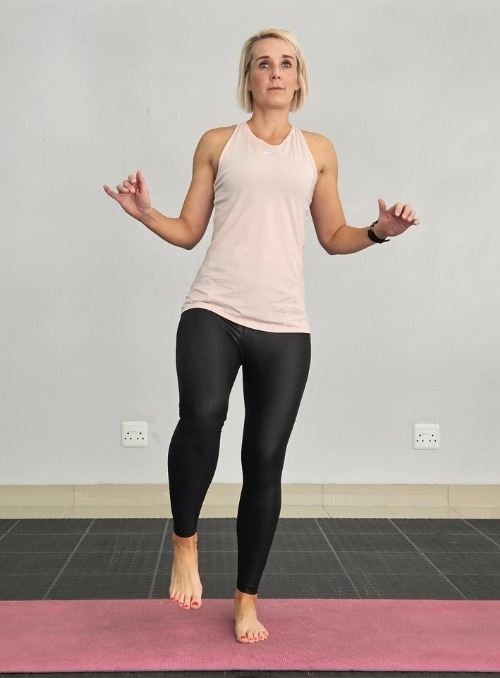
- Stand on one leg with arms out for balance.
- Keep your pelvis level while bending the standing knee slightly.
- Hold for 30 seconds before switching sides.
- Perform 2–3 sets per leg.
- This highlights imbalances and builds strength in the hip muscles for long-term support.
Why Hip Imbalances Matter
Hip imbalances may cause pain during squats, lunges, or daily movements like walking. When left uncorrected, they can contribute to back pain [3], knee stress, and reduce mobility. Overtime, uneven hip strength leads to poor posture and may affect performance in sports or exercise.
Improving hip strength with targeted rehab exercises supports the hip joint, enhances alignment, and prevents recurring hip pain or back problems.
As Dean Somerset emphasizes in his Post-Rehab Essentials program, the key is not just diagnosing isolated muscles but improving movement quality. Focusing on the gluteus medius, pelvic stability, and functional strengthening exercises leads to long-term results.
By combining corrective exercise programs with consistent re-testing, you can address weaknesses, restore hip mobility, and move with better posture and control.
Final Thought
Correcting hip imbalances takes time and patience, but with a structured routine, real progress is achievable. With exercises like band side steps, glute bridges, and hip rotations, you can strengthen the muscles around your pelvis, improve mobility, and reduce the risk of back pain or hip problems.
Consistency matters—perform these exercises 3 times per week as part of your rehab routine. Over the long term, this approach will help improve alignment, build strength, and prevent imbalances from causing pain again.
Are you constantly troubled by joint pain, bad posture, or stress? Unlock Your Hip Flexors may be the solution you’ve been searching for! Check it out now!
FAQs
What causes hip imbalances?
Hip imbalances may develop from poor posture, repetitive movements, injuries, or weakness in specific hip muscles like the gluteus medius or gluteus maximus [2]. Over time, these imbalances can affect the pelvis, lower back, and even the knee joint, leading to pain and restricted mobility.
How can I test for hip imbalances at home?
A simple way is to stand on one leg and check if your pelvis stays level. If one side drops or your hip rotates, it may indicate muscle imbalances or weak hip stability. Another option is the Thomas Test, which assesses hip flexor flexibility and potential imbalances.
How often should I do hip rehab exercises?
For best results, aim to perform these exercises 3 times per week. Hold positions for 30 seconds, complete 2–3 sets, and gradually increase time under tension. Consistency is important to see lasting improvements in strength, stability, and mobility.


